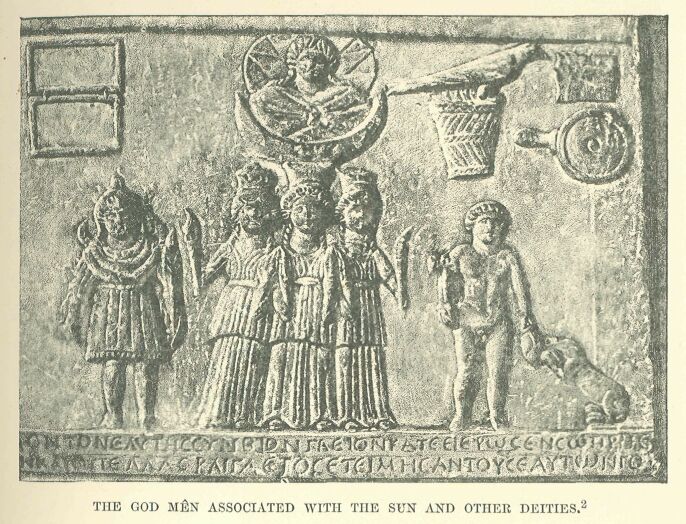It looks like you're using an Ad Blocker.
Please white-list or disable AboveTopSecret.com in your ad-blocking tool.
Thank you.
Some features of ATS will be disabled while you continue to use an ad-blocker.
share:
The Man-Horse figure with the two "armed arms" with axes...
This is what I think of immediately :
Lamassu
Fours = Force
The "Wings" became "Arms with Weapons" apparently. It would seem to translate pretty well.
I'm not saying it's a direct influence but I am showing how easy it is to compare and contrast these things.
They share similar origins at the least.
The image noted shows a "Cross" which is 4, and it shows 4 figures in each corner.
Therefore : Cherub
Seraphim
I actually choose a lot of photos through my last few threads to explicitly reveal this interesting correlation found seemingly in any culture you stumble across.
Even the Flag of the UK is a perfect example of that iconography hidden in plain sight.
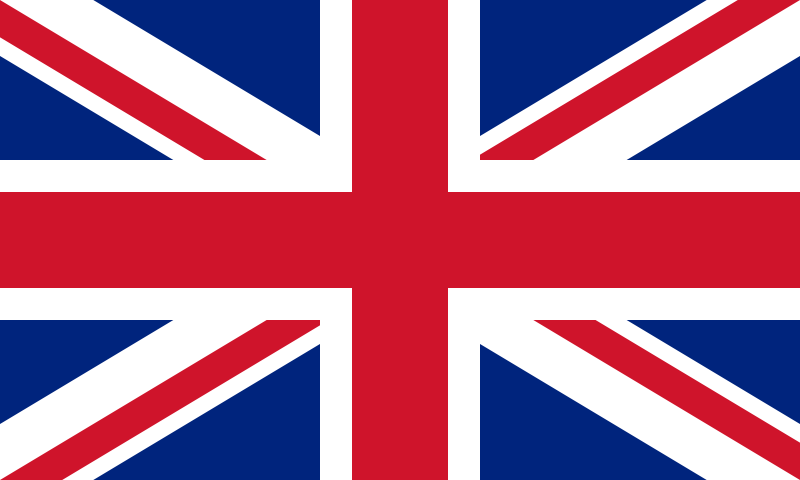
Star of Shamash
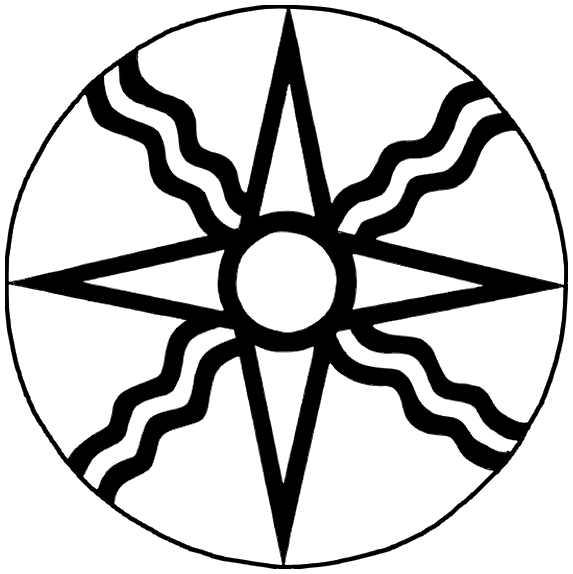
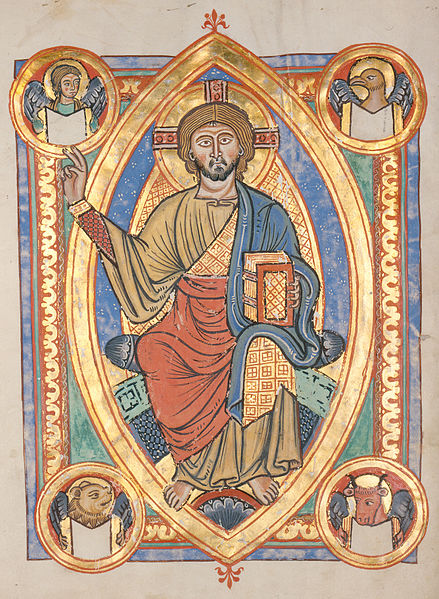
So the "Double Headed Bird" for example would be a hidden variant of this.
The two heads and legs/claws would be the X
and the Body-Wings would make the Cross +
So it's actually right in plain sight with these legionary scutums:
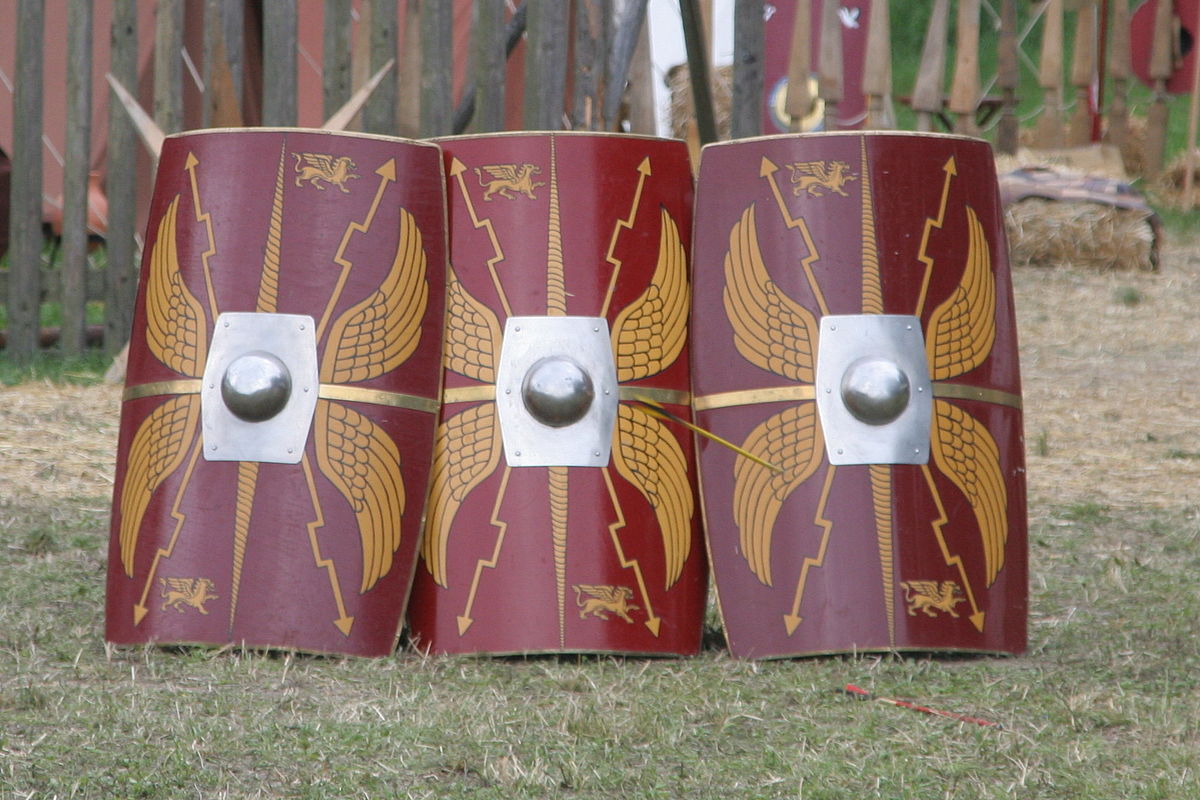
Because the "Angel" figure (Angler) is the "Shield" or 'Guardian of the Gates'.
I could go on and on showing tons of stuff but that's one of the prominent themes in my recent thread so they can just go explore that there if they want.
Knowing how commonplace the motif is and what resources we can look into to learn about it's ancient origins helps in understanding the later iconography.
This is what I think of immediately :
Lamassu
A lamassu (Cuneiform: 𒀭𒆗, AN.KAL; Sumerian: dlamma; Akkadian: lamassu) is an Assyrian protective deity, often depicted with a bull or lion's body, eagle's wings, and human's head.[1]
Fours = Force
The "Wings" became "Arms with Weapons" apparently. It would seem to translate pretty well.
I'm not saying it's a direct influence but I am showing how easy it is to compare and contrast these things.
They share similar origins at the least.
The image noted shows a "Cross" which is 4, and it shows 4 figures in each corner.
Therefore : Cherub
Seraphim
I actually choose a lot of photos through my last few threads to explicitly reveal this interesting correlation found seemingly in any culture you stumble across.
Even the Flag of the UK is a perfect example of that iconography hidden in plain sight.

Star of Shamash
Shamash (Akkadian Šamaš "Sun"), was a native Mesopotamian deity and the sun god in the Akkadian, Assyrian and Babylonian pantheons.


So the "Double Headed Bird" for example would be a hidden variant of this.
The two heads and legs/claws would be the X
and the Body-Wings would make the Cross +
So it's actually right in plain sight with these legionary scutums:

Because the "Angel" figure (Angler) is the "Shield" or 'Guardian of the Gates'.
I could go on and on showing tons of stuff but that's one of the prominent themes in my recent thread so they can just go explore that there if they want.
Knowing how commonplace the motif is and what resources we can look into to learn about it's ancient origins helps in understanding the later iconography.
beansidhe
reply to post by Logarock
The above is a copy of a Phrygian God man - The History of Egypt and shows the mirror and case, and the crescent moon!!
If you take Wilson's interpretations of the Triads etc as fact, then you'll notice an interesting correlation with the Trojans - Wilson et al claiming that the Britons were descendants of the Trojans, hence the Roman interest in the country, since they recognised the right of the British Kings to remain in their positions throughout the Roman conquest. The Romans sought to intermarry with the Royal Trojan/British families to further secure their rights.
Phrygians are certainly early enough to be considered a possibility, and seem to have their origins in the Balkans.edit on 21-3-2014 by beansidhe because: (no reason given)
Excellent find my friend! That's the first good solid connection we have had on the mirror.
And yes the Romans allowed the Celtic Galatians to keep a tribal head. Which amounted to a head of clans really as at the first the stubborn Galatians insisted on three heads one for each Celtic group of the Galatians but they managed to come under one organic ruler in time.
reply to post by Logarock
And Beansidhe, I'd missed that mirror before. There it is. Whoomp, as they say.
Now what Egyptian era was that made in? Would be my next question. Let's place that Egyptian mirror into the timeline. That could possibly date our Pictish mirrors more realistically.
And Beansidhe, I'd missed that mirror before. There it is. Whoomp, as they say.
Now what Egyptian era was that made in? Would be my next question. Let's place that Egyptian mirror into the timeline. That could possibly date our Pictish mirrors more realistically.
reply to post by Logarock
I actually screamed out loud when I found it!
So Thracian/Phrygian is absolutely in the running
I actually screamed out loud when I found it!
So Thracian/Phrygian is absolutely in the running
reply to post by Ramcheck
According to my scanty knowledge of Phrygians, around 1200-700 BC. (i.e. Wiki)
Which is a bit of an eye-opener really, and gives us some indication of the timelines we might have to consider for our Picts...
According to my scanty knowledge of Phrygians, around 1200-700 BC. (i.e. Wiki)
Which is a bit of an eye-opener really, and gives us some indication of the timelines we might have to consider for our Picts...
reply to post by beansidhe
Heres an example of some Thracian work. Looks Celtic/Nordic/Scythian.
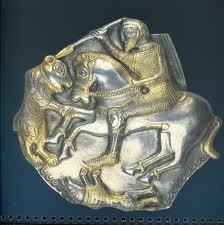
Thracian
Look at all the dragons
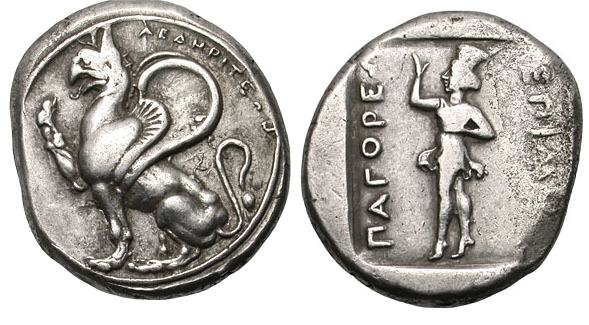
And wow where have we seen the dragon with raised arm?

Thrace
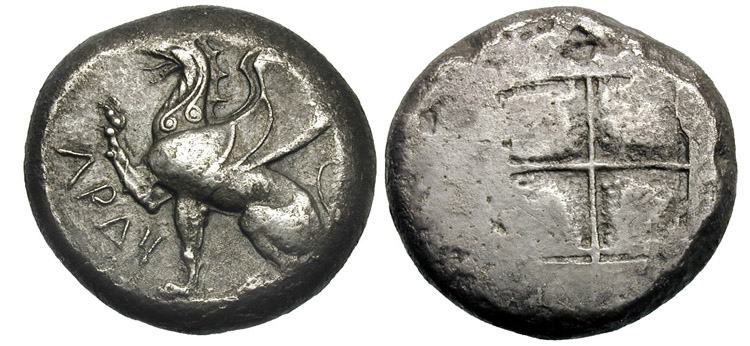
Heres an example of some Thracian work. Looks Celtic/Nordic/Scythian.

Thracian
Look at all the dragons

And wow where have we seen the dragon with raised arm?

Thrace

edit on 21-3-2014 by Logarock because: n
reply to post by Logarock
Ooh, that's what I wanted to say, you've just reminded me. The Gundestrup cauldron is said to be of Thracian silver, but again with 'Celtic' motifs.
The dragons, well spotted!! Back in a bit
Ooh, that's what I wanted to say, you've just reminded me. The Gundestrup cauldron is said to be of Thracian silver, but again with 'Celtic' motifs.
The dragons, well spotted!! Back in a bit
Logarock
And wow where have we seen the dragon with raised arm?
Thrace

edit on 21-3-2014 by Logarock because: n
The battle Standard of King Arthur (one of the two). Laterally the flag of Wales. Good one, well spotted.
reply to post by Ramcheck
Look at this one from Thrace. This one is standing with raised hand. Said to be a buckle on horse gear.
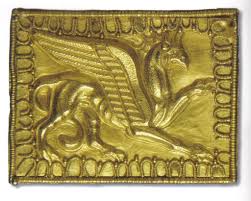
Look at this one from Thrace. This one is standing with raised hand. Said to be a buckle on horse gear.

Ok, and on our stones:
The Dupplin Stone, said to be for St Serf. Notice it's raised paws/arms:
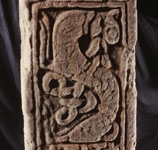
The Meigle 4:
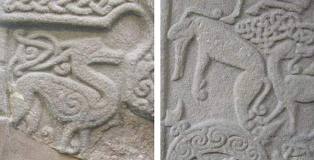
And again on the 'Dragon Stone':
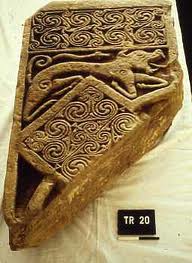
The Welsh Flag:

The Dupplin Stone, said to be for St Serf. Notice it's raised paws/arms:

The Meigle 4:

And again on the 'Dragon Stone':

The Welsh Flag:

Logarock
reply to post by beansidhe
Thrace
edit on 21-3-2014 by Logarock because: n
Look at your dragon's 'hair' - it's Pictish swirls. It's almost Pictish?!
reply to post by beansidhe
Strong links between the Welsh language and the language spoken by the Picts. Bede, in particular wrote that Columba (a Gael) needed and got an interpretor to communicate with the Picts.
And strong links between the Welsh langauge and Gaulish, as recorded by a few Middle Ages archivists.
Gaul I think has always played a large part in this from the start, so many civilizations passed through Gaul over time, many traders, many searching for the edge of the world and many more looking to settle on uninhabited land.
Strong links between the Welsh language and the language spoken by the Picts. Bede, in particular wrote that Columba (a Gael) needed and got an interpretor to communicate with the Picts.
And strong links between the Welsh langauge and Gaulish, as recorded by a few Middle Ages archivists.
Gaul I think has always played a large part in this from the start, so many civilizations passed through Gaul over time, many traders, many searching for the edge of the world and many more looking to settle on uninhabited land.
reply to post by Ramcheck
Absolutely, both P-Celtic (apparently) along with Cornish, and you'll remember Cody's Cornish stones from earlier.
The Gododdin was found, (was it Edinburgh?) and it was written in Welsh.
Given that it is thought Y Gododdin is from around the 7th-8th century, it could be safe to assume a) the Picts understood Welsh as they were able to communicate with their neighbours and join forces, and b) they must have had communications with Wales, if Arthur is mentioned, and known about.
Absolutely, both P-Celtic (apparently) along with Cornish, and you'll remember Cody's Cornish stones from earlier.
The Gododdin was found, (was it Edinburgh?) and it was written in Welsh.
The Gododdin, known in Roman times as the Votadini, held territories in what is now southeast Scotland and Northumberland, part of the Hen Ogledd (Old North). The poem tells how a force of 300 (or 363) picked warriors were assembled, some from as far afield as Pictland and Gwynedd. After a year of feasting at Din Eidyn, now Edinburgh, they attacked Catraeth, which is usually identified with Catterick, North Yorkshire. After several days of fighting against overwhelming odds, nearly all the warriors are killed. The poem is similar in ethos to heroic poetry, with the emphasis on the heroes fighting primarily for glory, but is not a narrative. The manuscript contains several stanzas which have no connection with the Gododdin and are considered to be interpolations. One stanza in particular has received attention because it mentions King Arthur, which, if not an interpolation, would be the earliest known reference to that character, as outside this poem, Welsh Arthurian legend is known to develop only from c. the early 12th century.
Given that it is thought Y Gododdin is from around the 7th-8th century, it could be safe to assume a) the Picts understood Welsh as they were able to communicate with their neighbours and join forces, and b) they must have had communications with Wales, if Arthur is mentioned, and known about.
reply to post by beansidhe
They say, I have always heard that no one knows where the Welsh dragon comes from. No antecedence. But this must be antecedence.

They say, I have always heard that no one knows where the Welsh dragon comes from. No antecedence. But this must be antecedence.

I'm not totally down with this whole YT channel, the conspiracy angle they take, or whatever. But I do make a point of listening to Alan Wilson. He
knows his stuff when it comes to Welsh and Southern English Celtic origins.
beansidhe
Y Gododdin for anyone who wants to read it.
Wonderful!
Riveting!
Fascinating!
Enthralling!
What else is known about this Beans?
Is the conflict described here a known one?
Are the characters known?
The Locations?
Thank you so much for the link!
Big G
Bore Da pobol!.............
Mad Welsh woman reporting for duty!....Gordi told me that you guys have started talking about dragons!
Right, I'm off to catch up on 40 pages! Wow!
In the meantime I can highly recommend Allan Wilson as suggested by a poster above this one....
Catch you all in a bit
Rainbows
Jane
Mad Welsh woman reporting for duty!....Gordi told me that you guys have started talking about dragons!
Right, I'm off to catch up on 40 pages! Wow!
In the meantime I can highly recommend Allan Wilson as suggested by a poster above this one....
Catch you all in a bit
Rainbows
Jane
beansidhe
Y Gododdin for anyone who wants to read it.
Beans...
I've just had one of those wtf moments!
I'm on my 1st read through Y Gododdin, and I'm struck by this thought....
300 warriors confront a much more massive invading force (I think 100,000 was mentioned?) whose armies arrive by the sea??
Remind you of another battle?
Thermopylae perhaps?
300 spartans are left to hold off the invading persian hordes (Thought to number around.... guess what? 100,000!!)
With all of the ancient Greek/Etruscan/Thracian links already mentioned.... It was a VERY spooky moment for me!
Might be completely wrong of course!! But might be worth considering??
G
reply to post by Gordi The Drummer
Definitely, definitely listen/read Allan Wilson. Ram just added a link and Logarock linked a superb lecture a couple of pages back. It is worth the time to listen - my jaw just kept falling lower and lower. But he does make sense, once you let it sit for a while and digest it.
My only gripe with him (other than not demonstrating the Coelbren alphabet) is that he takes the same view of the Picts as most British historians, ie ignores them other than to claim they were barbarians -well, in the book of his that I'm currently reading, anyway.
But in his defence, the Picts are not his focus, nor has he ever claimed they were. He seems to be a very thorough researcher and I've yet to read a critic who calls him a liar or a fabricator.
So yes, to answer your question - is it a strange coincidence? No, probably not!
And some background to the poem:
Definitely, definitely listen/read Allan Wilson. Ram just added a link and Logarock linked a superb lecture a couple of pages back. It is worth the time to listen - my jaw just kept falling lower and lower. But he does make sense, once you let it sit for a while and digest it.
My only gripe with him (other than not demonstrating the Coelbren alphabet) is that he takes the same view of the Picts as most British historians, ie ignores them other than to claim they were barbarians -well, in the book of his that I'm currently reading, anyway.
But in his defence, the Picts are not his focus, nor has he ever claimed they were. He seems to be a very thorough researcher and I've yet to read a critic who calls him a liar or a fabricator.
So yes, to answer your question - is it a strange coincidence? No, probably not!
And some background to the poem:
Y Gododdin (pronounced [ə ɡɔˈdɔðɪn]) is a medieval Welsh poem consisting of a series of elegies to the men of the Brittonic kingdom of Gododdin and its allies who, according to the conventional interpretation, died fighting the Angles of Deira and Bernicia at a place named Catraeth in c. AD 600. It is traditionally ascribed to the bard Aneirin and survives only in one manuscript, the Book of Aneirin.
The Book of Aneirin manuscript is from the later 13th century, but Y Gododdin has been dated to anywhere between the 7th and the early 11th centuries. The text is partly written in Middle Welsh orthography and partly in Old Welsh. The early date would place its oral composition soon after the battle, presumably in the Hen Ogledd ("Old North"); as such it would have been written in the Cumbric dialect of Common Brittonic.[1][2] Others consider it the work of a poet from Wales in the 9th, 10th or 11th century. Even a 9th-century date would make it one of the oldest surviving Welsh works of poetry.
The Gododdin, known in Roman times as the Votadini, held territories in what is now southeast Scotland and Northumberland, part of the Hen Ogledd (Old North). The poem tells how a force of 300 (or 363) picked warriors were assembled, some from as far afield as Pictland and Gwynedd. After a year of feasting at Din Eidyn, now Edinburgh, they attacked Catraeth, which is usually identified with Catterick, North Yorkshire. After several days of fighting against overwhelming odds, nearly all the warriors are killed.
edit on 22-3-2014 by beansidhe because: (no reason given)
new topics
-
Bucks County commissioners vote to count illegal ballots in Pennsylvania recount
2024 Elections: 1 hours ago -
Trump sues media outlets -- 10 Billion Dollar lawsuit
US Political Madness: 1 hours ago -
Fired fema employee speaks.
US Political Madness: 2 hours ago -
How long till it starts
US Political Madness: 3 hours ago -
USSS Agent Fired for Having Sex In Michelle Obama's Bathroom
US Political Madness: 5 hours ago -
Watching TV
Jokes, Puns, & Pranks: 8 hours ago
top topics
-
RFK is Trumps health pick
2024 Elections: 16 hours ago, 20 flags -
How long till it starts
US Political Madness: 3 hours ago, 10 flags -
Trump sues media outlets -- 10 Billion Dollar lawsuit
US Political Madness: 1 hours ago, 10 flags -
Fired fema employee speaks.
US Political Madness: 2 hours ago, 9 flags -
USSS Agent Fired for Having Sex In Michelle Obama's Bathroom
US Political Madness: 5 hours ago, 8 flags -
Bucks County commissioners vote to count illegal ballots in Pennsylvania recount
2024 Elections: 1 hours ago, 8 flags -
Watching TV
Jokes, Puns, & Pranks: 8 hours ago, 6 flags
active topics
-
Trump sues media outlets -- 10 Billion Dollar lawsuit
US Political Madness • 3 • : Astrocometus -
WATCH LIVE: US Congress hearing on UFOs, unidentified anomalous phenomena
Aliens and UFOs • 71 • : putnam6 -
The Trump effect 6 days after 2024 election
2024 Elections • 122 • : Astrocometus -
Chancellor Rachel Reeves - Former Colleagues Say She Lied About Role as ‘Economist’
Politicians & People • 3 • : gortex -
Mike Tyson returns 11-15-24
World Sports • 39 • : Blueracer -
-@TH3WH17ERABB17- -Q- ---TIME TO SHOW THE WORLD--- -Part- --44--
Dissecting Disinformation • 3274 • : Thoughtful3 -
How long till it starts
US Political Madness • 5 • : Astrocometus -
The art of being offended
Social Issues and Civil Unrest • 48 • : TimBurr -
Fired fema employee speaks.
US Political Madness • 6 • : xuenchen -
RFK is Trumps health pick
2024 Elections • 10 • : nugget1

